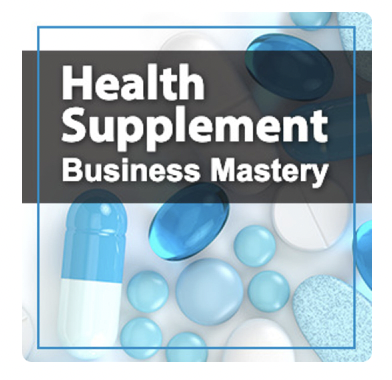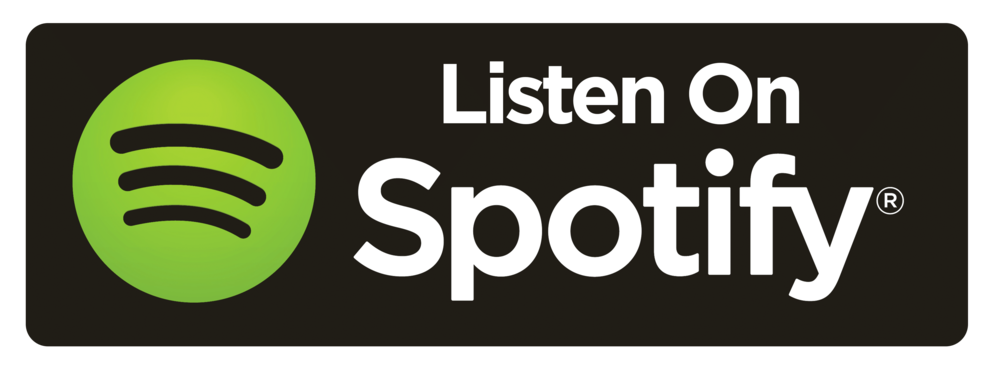Amazon helps supplement brands grow. It also creates big risks. Many companies rely only on Amazon. This is simple but dangerous. Smart owners need other sales channels.
Amazon should be part of your plan. But your product might disappear from Amazon. It could be gone for weeks. If that’s your only income source, you’re in trouble.
This article shows ways to reduce platform risk. You’ll learn from successful business owners. They’ve solved these problems already.
The Amazon Dependency Problem
Amazon now controls the supplement market. Ten years ago, supplements sold in many places. Specialty stores. Big-box stores. Direct marketing. Today, Amazon sells 80% of all supplements. Most brands depend on one company.
This has benefits. Amazon gives access to millions of customers. They handle shipping. They build trust with buyers. New supplement companies can start selling fast on Amazon.
But this creates danger. Products get suspended without warning. Amazon pulls items for no clear reason. Brands must fight to get back online. Products can vanish for weeks.
Suspensions happen for many reasons. Customer complaints. Rule concerns. Policy issues. System changes. They happen without warning. Brands scramble while sales drop to zero.
The financial impact is severe. A brand making $100,000 monthly might suddenly earn nothing. Yet costs continue. Inventory sits. Staff need payment. Marketing contracts remain. Cash problems develop quickly.
Even rule-following brands face risks. Amazon changes quality standards often. They now require lab tests. Some products need contamination testing. Previously approved products can become non-compliant. Fixing these issues costs money.
When Amazon Controls Your Business Destiny
Amazon’s rules seem random to sellers. Unlike government agencies, Amazon doesn’t give clear guidance. Products disappear with no explanation.
This makes planning nearly impossible. Brands can’t prepare for every suspension scenario. Problems might last days or months. Brands must make decisions without clear timelines.
The most frustrating part? Strong marketing without direct sales helps competitors. You build brand awareness. Customers search for you on Amazon. When they don’t find you, Amazon shows your competitors.
Your marketing dollars help your competition. You build someone else’s business with your own money.
Analyzing Your Current Platform Risk Exposure
Check your risk level first. Calculate your Amazon revenue percentage. Over 80% means high risk. Under 50% shows good diversification.
Plan for worst-case scenarios. How long could you survive without Amazon? Consider inventory costs. Staff wages. Marketing obligations. Many brands would fail within weeks.
Identify high-risk products. Weight loss supplements face more scrutiny. Pre-workout products with stimulants too. Products with bold claims get flagged. Items with controversial ingredients face problems.
Weight loss products are especially difficult to sell. Science won’t protect you. Quality testing helps little. Customer support isn’t enough. This category brings high risk.
Check your marketing effectiveness. Are you driving Amazon sales only? Or building direct customer relationships? Your ads should capture customer data. Not just create Amazon sales.
Building Your Direct-to-Consumer Foundation
Email marketing creates Amazon independence. Smart companies manage email lists carefully. They clean lists regularly. They maintain different customer groups. They always add new subscribers.
Email subscribers belong to you. Unlike social media followers. Unlike Amazon customers. You control this contact channel. This protects against platform problems.
Email content quality matters greatly. Send weekly tips with useful information. Include product links naturally. These emails drive sales consistently. Don’t just push products constantly.
This builds trust over time. Your brand becomes an authority. Relationships extend beyond single purchases. This creates long-term customer value.
Subscription models also reduce platform risk. One-time buyers become recurring customers. Revenue continues during Amazon disruptions. Customers form deeper connections. They’re less likely to switch brands.
Your website needs special optimization for supplements. Include educational content. Show clear buying paths. Provide ingredient information. Share scientific references. Display trust signals. Address safety concerns. Explain testing processes. Show compliance measures.
Content as Platform Insurance
Regular content protects your business. Publish valuable information consistently. Build audience relationships outside Amazon. Create assets with lasting value.
Top websites publish substantial content weekly. Long articles with videos and graphics work best. This drives search traffic. It proves your expertise. It provides email material. It maintains customer connections.
Podcasts work well for supplement brands. They allow in-depth health discussions. Written claims face more restrictions. Founder voices create stronger connections. This humanizes your brand.
Focus on educational topics. A probiotic company talks about gut health. Discuss digestive wellness. Explain microbiome research. This attracts health-conscious customers naturally.
Content remains accessible during Amazon problems. When listings disappear, your articles still work. Your videos continue attracting customers. Podcasts keep bringing in sales.
Diversifying Across Multiple Marketplaces
Other marketplaces reduce Amazon dependency. Walmart’s online platform reaches different customers. Competition is lower there. eBay still generates supplement sales. Value-focused brands do well there.
Specialty health sites offer opportunities too. iHerb, Vitacost, and Thrive Market attract health-conscious buyers. These customers pay more for quality products.
International expansion helps too. Amazon’s dominance varies by country. Local alternatives lead in some markets. Selling on Tmall (China) or Rakuten (Japan) reduces U.S. dependency.
Multiple marketplaces require smart inventory management. Each platform increases complexity. Order patterns differ. Lead times vary. Many brands use third-party logistics providers. These partners fulfill orders across all channels.
Leveraging Social Media as Independent Sales Channels
Social media can become sales channels too. Facebook groups create valuable communities. Customers share experiences there. They ask questions. They develop brand loyalty.
Customer success stories motivate everyone. A 29-pound weight loss announcement makes the week better. Smart brands save these stories. They send personal congratulation emails. They offer additional help.
This builds platform-independent relationships. Customers seek your brand anywhere. Direct sales happen through messages and comments. This offsets Amazon disruptions.
Instagram works well for visual education. Show ingredient spotlights. Share transformation stories. Provide behind-the-scenes glimpses. This builds trust effectively.
TikTok reaches younger audiences. Create educational short videos. Explain supplement benefits simply. Debunk common myths. Show proper usage. Drive traffic to direct channels.
Strategic Use of SMS and Phone Marketing
SMS marketing creates Amazon independence. Text messages make money. Use automatic replies for orders. Send shipping notifications promptly.
Texts get high open rates. They work for transactions and marketing. But control frequency carefully. Send eight emails monthly maximum. Limit marketing texts to six monthly.
Customers expect shipping notifications. These happen automatically. Marketing messages should be less frequent. This prevents message fatigue.
This approach maintains regular customer contact. It works even during Amazon problems. You always reach customers directly.
Phone marketing helps premium brands. Direct conversations allow personalized recommendations. They provide deeper education. They build stronger relationships. They increase conversion rates. They capture customer data.
Wholesale and Practitioner Channels
Brick-and-mortar stores still matter. Health food stores reach different customers. Vitamin shops attract serious health buyers. Fitness centers connect with active people. These channels expand your market reach.
Healthcare practitioners make powerful partners. Doctors influence patient purchases. Naturopaths recommend trusted brands. Chiropractors advise loyal patients. Nutritionists guide health journeys.
These relationships start with education, not sales. Practitioners choose brands based on quality. Scientific support matters most. Promotional incentives matter less.
Wholesale margins differ from direct sales. Direct channels bring 70-80% margins. Wholesale drops to 40-50%. This requires separate financial planning. Pricing may differ between channels.
Custom formulations for practitioners create strong diversification. These products can’t compete on Amazon. They establish protected revenue streams. They leverage practitioner credibility effectively.
Creating Product Diversification Strategies
Product diversity protects against platform risk. Create channel-specific offerings. Amazon products focus on search-driven categories. Direct-exclusive items need more education.
This prevents channel conflict. It creates multiple revenue streams. Each stream has independent risk factors.
Expand across multiple supplement categories. Weight loss sells well. Gut health proves popular too. Many people have digestive issues. Problems in one category won’t threaten everything.
Some brands create different names for different channels. This creates multiple “front doors” to one business. Each brand targets specific customer groups. Back-end operations remain efficient.
Larger sizes work well in direct channels. Start with monthly supply bottles. Add two-month options later. Storage costs increase minimally. Margins improve significantly. Average order value grows. Offer three sizes when products prove popular.
Managing Inventory Across Multiple Channels
Good inventory management becomes crucial with multiple channels. Sales forecasting grows more complex. Planning must be more sophisticated.
Cash flow requires careful balancing. Never run out of inventory. Never run out of money. These goals conflict constantly. Find the right balance.
Warehouse management presents new challenges. Should you separate inventory by channel? Or create one shared pool? Separate pools prevent widespread stockouts. Shared pools improve cash efficiency.
Third-party logistics providers offer helpful flexibility. They manage fulfillment across all channels. They create operational efficiency. They provide scalability during growth. Many specialize in supplements now.
Building a Marketing Ecosystem for Long-term Stability
Integrate all channels into one marketing system. Don’t treat each channel separately. Successful brands create synergistic approaches. Each channel strengthens the others.
Start with centralized customer data. Track interactions across all touchpoints. Understand the complete customer journey. Send personalized communications. Create seamless experiences everywhere.
Build one alternative channel at a time. Don’t pursue everything at once. Develop each new revenue stream fully. Then add more complexity gradually.
Create feedback loops between channels. Direct customer interactions reveal product preferences. They show messaging effectiveness. They highlight emerging needs. Amazon reviews reveal improvement opportunities.
Follow a gradual progression toward independence. Start with heavy Amazon dependence. Build direct-to-consumer capability first. Add more marketplaces next. Develop social following after that. Explore wholesale relationships last.
The strongest brands limit each channel to 30-40% of revenue. This makes platform disruptions manageable. The business survives marketplace changes. Growth continues despite problems.
Amazon remains important to your strategy. You can’t ignore it completely. Most supplements sell there now. But develop your own sales channels too.
The winning approach uses Amazon wisely. It also builds independent sales channels. Diversify across channels, products, and marketing approaches. Create a business that thrives regardless of platform changes.
Discover the 3 funnels that can help your health supplement business succeed.

Listen to the Health Supplement Business Mastery Podcast for for dietary supplement entrepreneurs and marketers.



